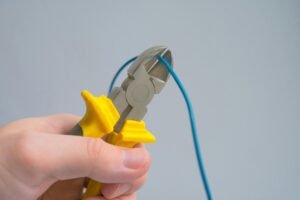Contents
ToggleMaterials and Equipment Quality in Electrical Installations
The cornerstone of any reliable and safe electrical installation lies in the quality of its components. In India, adherence to stringent standards like those outlined by the Bureau of Indian Standards (BIS) and the Central Public Works Department (CPWD) is paramount. These guidelines ensure that electrical systems are built using materials and equipment that meet stringent safety, performance, and durability criteria.
Key Material Standards for Uncompromising Quality
-
Conductors:
- BIS 1646:2015 governs PVC-insulated cables, emphasizing critical characteristics like flame retardancy and low smoke emission to minimize fire hazards.
-
Circuit Protection:
- BIS 3854 and BIS 8623 outline stringent standards for air circuit breakers and miniature circuit breakers (MCBs), respectively. These devices are crucial for protecting electrical systems from overloads and short circuits.
- CPWD guidelines emphasize the use of certified switchgear and protection devices, ensuring they meet rigorous standards for current-handling capacity, thermal stability, and overload protection.
Selecting Electrical Equipment for Optimal Performance
-
Transformers: BIS 1180 provides a framework for evaluating transformer quality, focusing on energy efficiency, robust insulation, and reliable overload protection.
-
Backup Power Systems:
- BIS 13364 outlines standards for generators, prioritizing power rating, energy efficiency, and operational safety.
- Backup power systems are critical for ensuring continuity of operations in essential facilities.
-
Lighting Solutions:
- CPWD actively promotes the adoption of energy-efficient LED lighting solutions, recognized for their longevity, minimal heat generation, and reduced environmental impact.
- BIS codes guide the selection of high-quality lighting fixtures, emphasizing factors like energy efficiency, heat dissipation, and optimal light quality.
Prioritizing Energy Efficiency in Material Selection
-
Conductive Efficiency:
- Copper and aluminum are preferred conductors due to their low electrical resistance, minimizing energy loss.
- BIS 732:1989 specifies the ratings for conductors, ensuring efficient energy transfer and mitigating the risk of overheating.
-
Insulation Excellence:
- High-quality insulation is crucial for both energy efficiency and safety.
- BIS 13703 outlines the essential properties of insulating materials used in power cables, ensuring they can withstand thermal and mechanical stress.
Ensuring Compliance and Maintaining Quality
-
Certification and Labeling: All materials and equipment must bear the BIS mark of certification, ensuring adherence to relevant standards.
-
Vendor Due Diligence:
- Procurement teams must rigorously vet vendors, verifying their credentials, certifications, and commitment to quality.
- Collaborating with reputable vendors ensures the use of high-quality materials throughout the project.
-
Rigorous Site Inspection:
- Regular site inspections and audits are imperative to ensure that materials and equipment are installed as per specifications and meet the highest quality standards.
The Benefits of Investing in Quality
-
Enhanced Safety: High-quality materials and equipment minimize the risk of electrical hazards, ensuring a safer working and living environment.
-
Increased Longevity and Reduced Maintenance: Durable components lead to reduced maintenance needs and extended equipment lifespan, resulting in significant long-term cost savings.
-
Improved Energy Efficiency:
- Energy-efficient materials and equipment contribute to reduced energy consumption, lowering operational costs and minimizing environmental impact.
-
Optimized System Performance:
- The use of high-quality components ensures the reliable and efficient operation of electrical systems under varying loads and conditions.
Conclusion
The selection and utilization of high-quality materials and equipment are paramount for the successful and safe implementation of electrical installations. By adhering to stringent BIS codes, adhering to CPWD guidelines, and implementing robust quality assurance measures, engineers and contractors can create electrical systems with sustainable and cost-effective in the long run.












